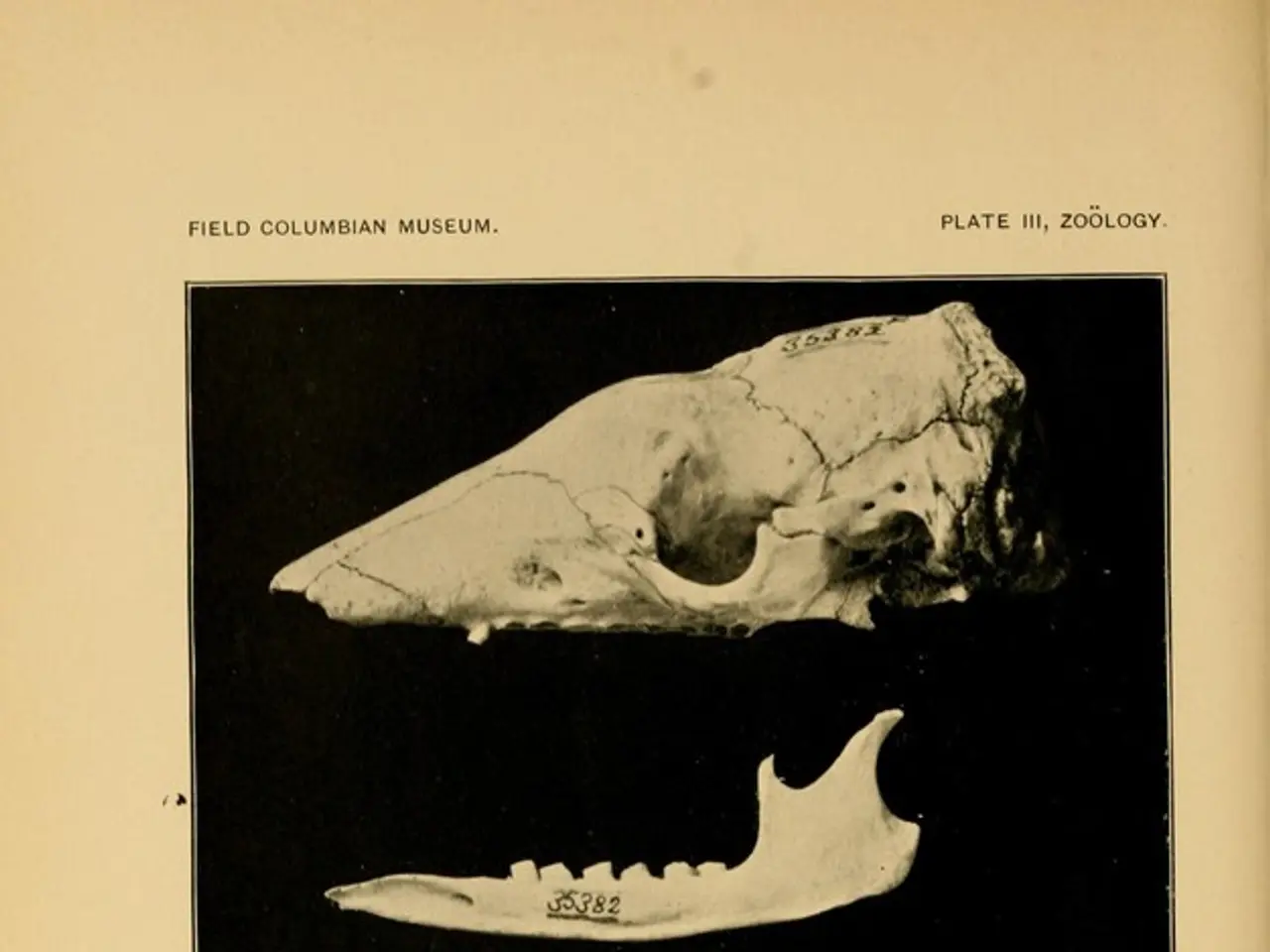Iliac Crest Discomfort: Root Causes, Symptoms, Exercises, and Remedies
Iliac crest pain, a discomfort often felt in the hip area, can stem from various factors such as muscle weakness, trauma, overuse, and more serious conditions like bone cancer. This article aims to provide a clear understanding of the common causes, treatments, and prevention methods for iliac crest pain.
The first line of defence in managing most types of iliac crest pain is the acronym RICE: rest, ice, compression, and elevation. By following this simple routine, you can help reduce inflammation and alleviate pain.
Common conditions causing iliac crest pain include ilium apophysitis, a condition that affects children and adolescents due to overuse, and iliolumbar syndrome, which occurs when the iliolumbar ligament is inflamed or torn, often due to repeated twisting or bending motions.
Gluteus medius pain, a condition affecting the main muscle in the buttock, can also lead to pain near the iliac crest. Sacroiliac joint dysfunction, a condition that can cause pain in the lower back, abdomen, or groin, is another potential cause. In rare cases, bone cancer may be the culprit.
For conditions like ilium apophysitis, a doctor may recommend anti-inflammatory medication if the RICE method does not ease the pain. Iliolumbar syndrome, on the other hand, is best managed with rest, ice, and over-the-counter pain medications. In severe cases, a healthcare professional may recommend steroid injections.
Physical therapy is frequently recommended to strengthen the muscles supporting the affected area and improve stability and posture, which can help relieve pain around the iliac crest. Other conservative treatments, such as massage, acupuncture, chiropractic care, and transcutaneous electrical nerve stimulation (TENS), may provide additional relief when combined with standard therapy.
If conservative treatments fail to provide long-term relief, minimally invasive surgical procedures like the iFuse implant for sacroiliac joint fusion may be considered by specialists. In some cases, regenerative therapies like platelet-rich plasma (PRP) injections can help reduce inflammation and restore joint stability without surgery.
Prevention measures for hip pain include maintaining a moderate weight, wearing good shoes, avoiding strain, exercising, and trying gentle hip stretching exercises. Over-the-counter pain medications such as acetaminophen and ibuprofen may help reduce pain and inflammation.
If iliac crest pain does not go away with home treatments, it is essential to speak to a doctor about other ways to manage the pain. In some cases, further diagnostic tests like X-rays, CT scans, or MRI may be necessary to determine the exact cause of the pain.
In conclusion, treatment for iliac crest pain often involves a combination of physical therapy, medications, injection therapy, and sometimes advanced regenerative or surgical options, tailored according to the patient’s specific diagnosis and response to initial therapies. By understanding the causes and available treatments, you can take steps to manage and prevent iliac crest pain effectively.
- In addition to the RICE method, conditions like psoriasis, an inflammatory skin disease, and depression, a mental health issue, can also contribute to overall discomfort and pain, including that near the iliac crest.
- For those suffering from chronic disorders such as ankylosing spondylitis, a type of arthritis that primarily affects the spine, and Crohn's disease, a form of inflammatory bowel disease that can lead to colonitis or ulcerative colitis, iliac crest pain could be a symptom.
- Asthma, a respiratory condition, can sometimes cause bone and muscle pain, though not directly in the iliac crest area. The associated discomfort may originate from tense muscles used to compensate for labored breathing.
- Chronic kidney disease, a long-term condition that affects the kidneys, might not seem directly related, but pain and muscle weakness can be symptoms.
- NSCLC, or non-small cell lung cancer, is a type of tumor that can metastasize to other parts of the body, including the bones, causing bone pain in some cases.
- In the workplace wellness context, maintaining good posture and ergonomics can help prevent both muscle pain and the onset of medical conditions that may lead to iliac crest pain.
- Nutrition plays a crucial role in overall health and can affect conditions such as osteoporosis, which weakens the bones and may increase the risk of bone cancer and other bone-related diseases, including those causing iliac crest pain.
- Science continues to explore new therapies and treatments for various chronic diseases, and as research advances, there may be new options for managing iliac crest pain effectively.
- Furthermore, fitness and exercise can help prevent and manage many chronic diseases, as well as relieve symptoms such as muscle pain and joint issues, contributing to a reduction in iliac crest pain.
- Some chronic diseases, such as bone cancer or rheumatoid arthritis, a type of arthritis that attacks the synovial membrane lining joints, necessitate ongoing medical management and closer monitoring by healthcare professionals.
- Science and medical communities are increasingly focusing on joint health, with a study on AQ, a compound found in some joint supplements, showing potential benefits in managing joint pain and improving overall joint health.
- In terms of skin care, maintaining healthy skin may indirectly support overall wellness, as a weakened immune system can contribute to both skin disorders and the progression of chronic diseases, potentially leading to pain in the iliac crest area.
- Additionally, taking a proactive approach to managing and preventing chronic diseases through regular check-ups, maintaining a healthy lifestyle, and being aware of symptoms can help early detection and minimized impact on one's quality of life, including the prevention of iliac crest pain.
- By educating ourselves about common chronic diseases, treatments, and prevention methods, we can gain a better understanding of the factors contributing to iliac crest pain and work towards a more pain-free lifestyle.






